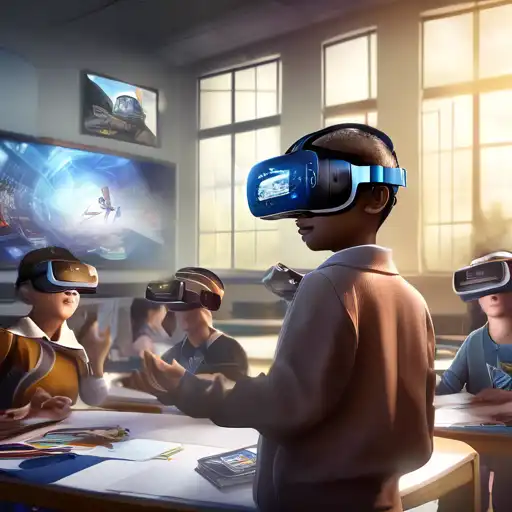Introduction to Virtual Reality in Education
Virtual Reality (VR) is transforming the educational landscape, offering immersive learning experiences that were once unimaginable. This technology enables students to explore historical sites, dissect virtual frogs, or even travel through the human bloodstream, all from the safety of their classroom. The potential of VR in education is vast, promising a new era of interactive and engaging learning.
The Benefits of Virtual Reality for Students
VR in education offers numerous benefits, including enhanced engagement, improved retention rates, and the ability to simulate real-world scenarios. Students can practice complex surgical procedures or explore the surface of Mars, making learning not just informative but truly unforgettable. This hands-on approach caters to various learning styles, ensuring that every student can benefit.
Engagement and Motivation
One of the key advantages of VR is its ability to captivate students' attention. Traditional learning methods can sometimes fail to engage, but VR's interactive nature ensures that students are not just passive recipients of information but active participants in their learning journey.
Accessibility and Inclusivity
VR technology can also make education more accessible. Students with physical disabilities can experience field trips or activities that would otherwise be inaccessible to them, leveling the playing field for all learners.
Implementing VR in the Classroom
Integrating VR into educational settings requires careful planning and consideration. Schools must invest in the necessary hardware and software, and teachers need training to effectively incorporate VR into their lesson plans. However, the investment can pay off significantly in terms of student outcomes and engagement.
Choosing the Right VR Content
Not all VR content is created equal. Educators must select programs that align with their curriculum goals and enhance learning objectives. Quality VR educational content should be interactive, accurate, and designed with pedagogical principles in mind.
Challenges and Considerations
Despite its benefits, VR in education faces challenges, including high costs, technical issues, and the need for ongoing support. Additionally, there's the question of screen time and ensuring that VR complements rather than replaces traditional learning methods.
Future Prospects
As technology advances, VR is expected to become more affordable and widespread, making it a staple in classrooms around the world. The future of education is bright, with VR leading the charge towards more interactive and personalized learning experiences.
Conclusion
Virtual Reality is set to revolutionize education, offering unparalleled opportunities for immersive learning. While challenges remain, the potential benefits for student engagement, accessibility, and learning outcomes are undeniable. As we move forward, VR will undoubtedly play a pivotal role in shaping the future of education.
For more insights into innovative educational technologies, explore our technology in education section.
